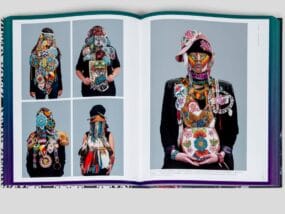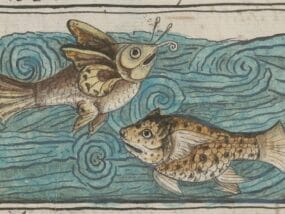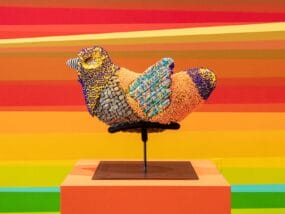Art
Social Issues
#Indigenous culture
#installation
#Jeffrey Gibson
#sculpture
In Venice, Jeffrey Gibson Envelops the U.S. Pavilion in Kaleidoscopic Color and Flawed Promises
April 19, 2024
Grace Ebert

Left: “The Enforcer” (2024). Right: “WE WANT TO BE FREE”(2024). Mural: “WE ARE MADE BY HISTORY” (2024). All photos by Timothy Schenck, shared with permission
Written in blocky, bright typography, “We hold these truths to be self-evident” wraps the top of the neoclassical facade of the U.S. Pavilion at the 60th Venice Biennale. The opening lines from the Declaration of Independence greet visitors to the groundbreaking exhibition the space in which to place me by artist Jeffrey Gibson, the first Indigenous artist to represent the U.S. with a solo exhibition.
A member of the Mississippi Band of Choctaw Indians and Cherokee descent, Gibson has established a distinct visual language that incorporates psychedelic color palettes, text, graphic forms, and various materials with references to Indigenous life, queer culture, literature, music, and more.
In Venice, the artist invokes Layli Long Soldier’s “Ȟe Sápa, One,” a poem with a distinct geometric shape not unlike the ones he creates visually. As curator Kathleen Ash-Milby says, the work “extends the timeline of Indigenous histories. Jeffrey combines ancient aesthetic and material modalities with early 19th- and 20th-century Native practices to propose an Indigenous future of our own determination.”

Exterior view of ‘the space in which to place me’ (2024)
In Gibson’s practice and this project, language plays a critical role. Additional phrases appear throughout the exhibition, including on the bodies of two new monumental figures dressed in beads, fringe, and tin jingles. Titled “The Enforcer” and “WE WANT TO BE FREE,” the sculptures loom large and include lines from Reconstruction-era constitutional amendments along with the Indian Citizenship Act of 1924, a long-overdue law granting basic rights to Indigenous people.
In another gallery are Gibson’s beaded birds, which draw on the Indigenous craft tradition of whimsies. A recurring interest for the artist, the objects “fell into a category of being kitsch novelty because they weren’t seen as being Native enough or Victorian enough for the times they were being made in,” he said. Beaded motifs also appear on a punching bag and a new trio of busts with long hair cloaking the faces, the latter of which is “intentionally indeterminate” in culture and aesthetics.

Birds from left to right: “we are the witnesses” (2024) and “if there is no struggle there is no progress” (2024). Wall works from left to right: “BIRDS FLYING HIGH YOU KNOW HOW I FEEL” (2024) and “IF YOU WANT TO LIFT YOURSELF UP LIFT UP SOMEONE ELSE” (2024)
Large-scale murals and paintings line the walls of each gallery, enveloping the sculptures and viewers in electrifying patchwork. As detailed in a lengthy profile in The New York Times, color plays a crucial role for the artist and his links to Native and queer traditions. “We’ve been dismissed as garish and too much because of our use of color,” he said. Instead, he uses such kaleidoscopic compositions to shift the perspective and offer a different view of past and present. With the pavilion, he “wanted to map out some moments in American history when there is this real promise of equality, liberty, and justice and then think about what those terms mean.”
the space in which to place me will be on view in Venice from April 20 to November 24. It’s worth picking up a copy of An Indigenous Present, Gibson’s critically acclaimed survey of Native North American art, to learn more about his thinking and work.

“WE HOLD THESE TRUTHS TO BE SELF-EVIDENT” (2024)
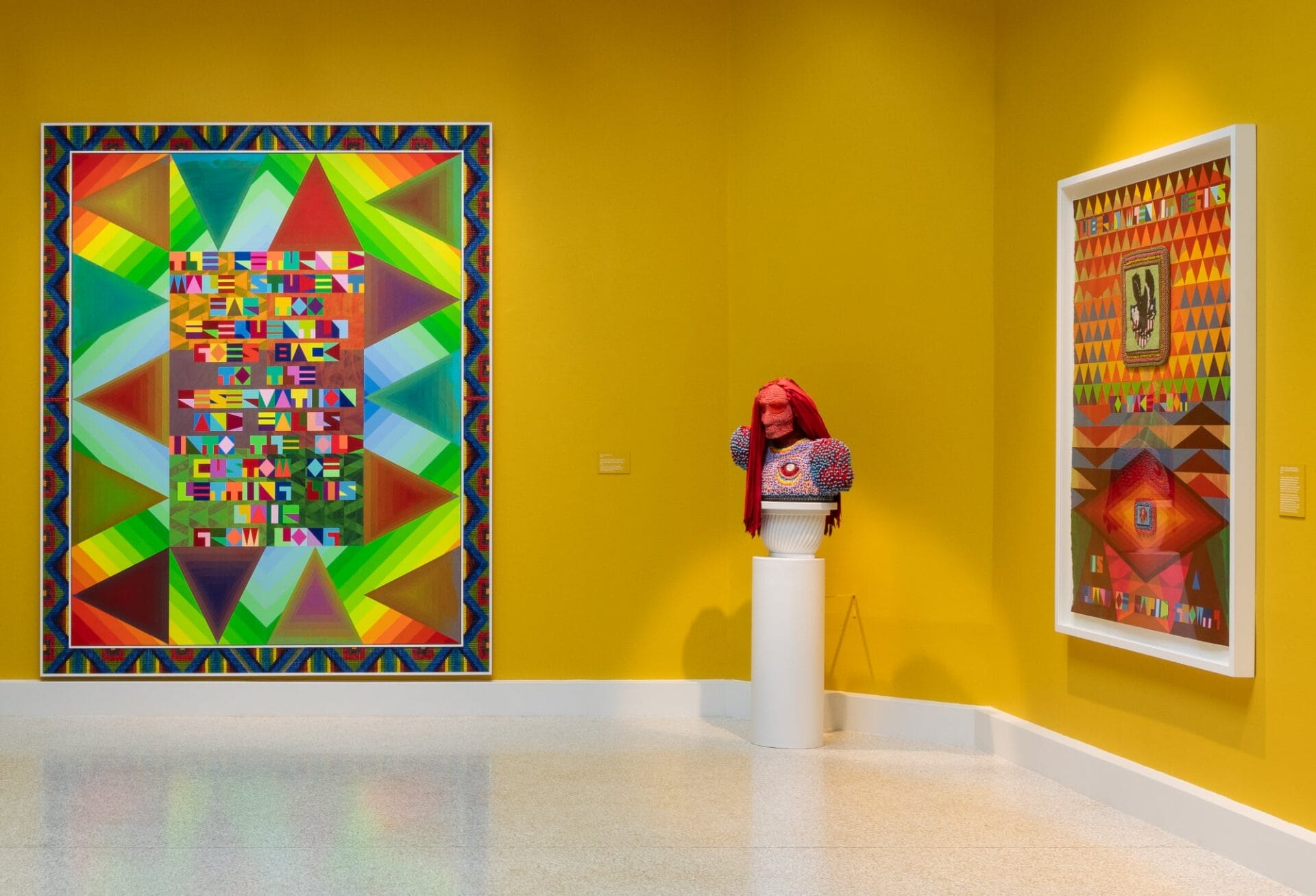
From left to right: “THE RETURNED MALE STUDENT FAR TOO FREQUENTLY GOES BACK TO THE RESERVATION AND FALLS INTO THE OLD CUSTOM OF LETTING HIS HAIR GROW LONG” (2024), “I’M A NATURAL MAN (2024), “LIBERTY WHEN IT BEGINS TO TAKE ROOT IS A PLANT OF RAPID GROWTH” (2024)

Exterior view of ‘the space in which to place me’ (2024)

Detail of “WE HOLD THESE TRUTHS TO BE SELF-EVIDENT” (2024)

Wall works from left to right: “BIRDS FLYING HIGH YOU KNOW HOW I FEEL” (2024), “IF YOU WANT TO LIFT YOURSELF UP LIFT UP SOMEONE ELSE” (2024), “GIVE MY LIFE SOMETHING EXTRA” (2024), “THE RIGHT OF THE PEOPLE PEACEABLY TO ASSEMBLE” (2024). Bird: “we are the witnesses” (2024)
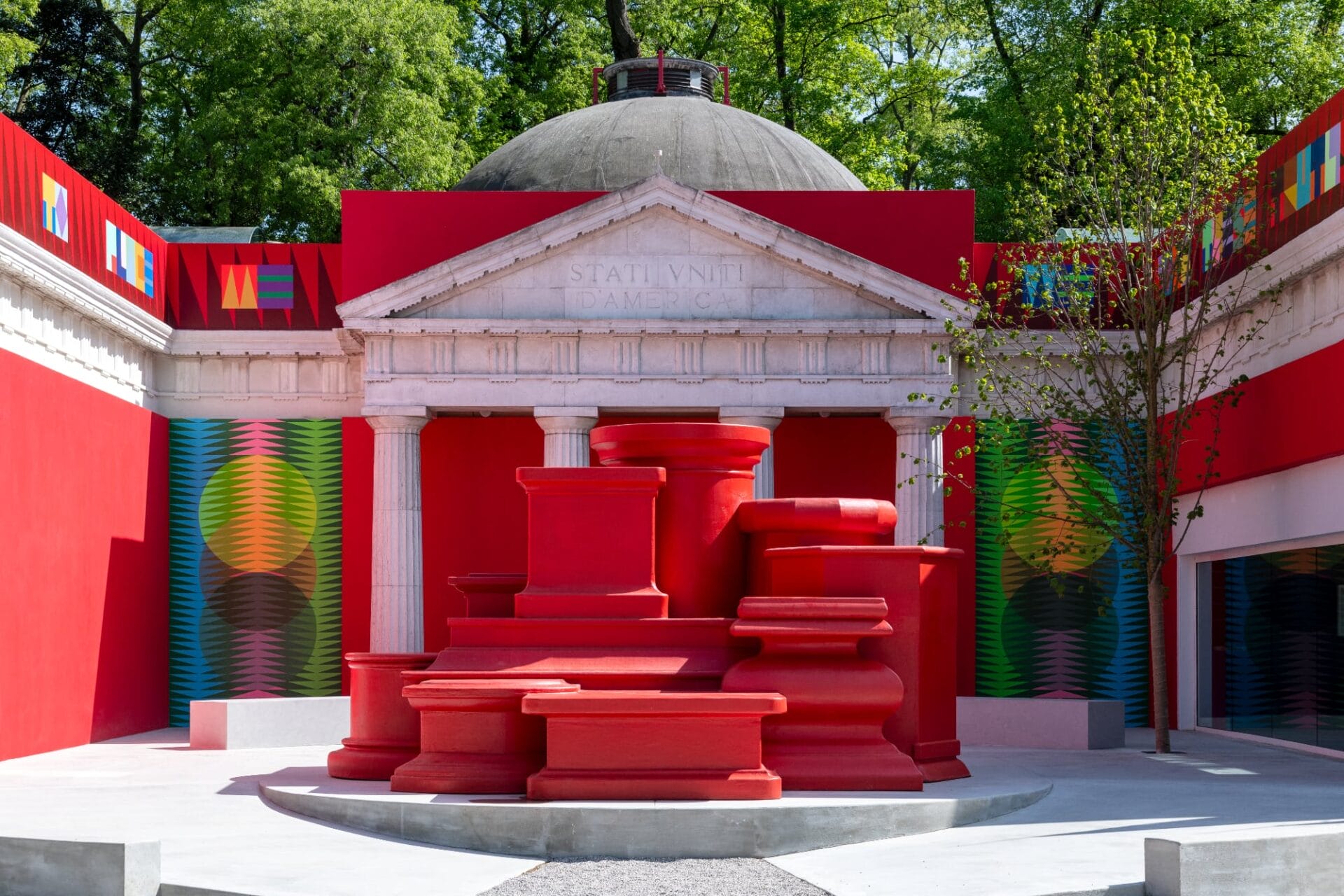
Exterior view of ‘the space in which to place me’ (2024)
#Indigenous culture
#installation
#Jeffrey Gibson
#sculpture
Do stories and artists like this matter to you? Become a Colossal Member today and support independent arts publishing for as little as $5 per month. You’ll connect with a community of like-minded readers who are passionate about contemporary art, read articles and newsletters ad-free, sustain our interview series, get discounts and early access to our limited-edition print releases, and much more. Join now!
Share this story
This article comes from the Internet:In Venice, Jeffrey Gibson Envelops the U.S. Pavilion in Kaleidoscopic Color and Flawed Promises


